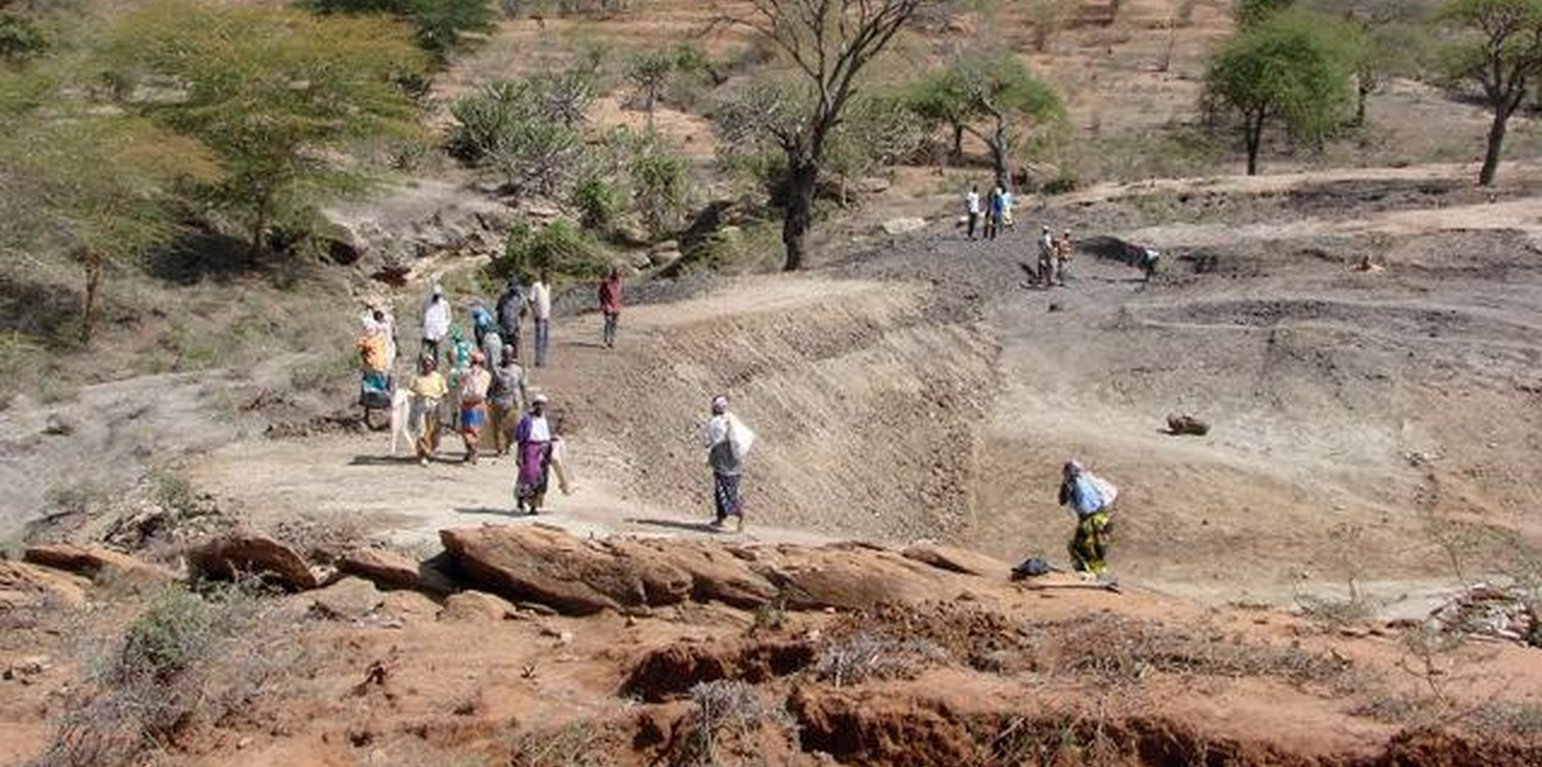



Small earth dams are water harvesting storage structures, constructed across narrow sections of valleys, to impound runoff generated from upstream catchment areas.
Establishment / maintenance activities and inputs: Construction of the dam wall begins with excavation of a core trench along the length of the dam wall which is filled with clay and compacted to form a ‘central core’ that anchors the wall and prevents or minimizes seepage. The upstream and downstream embankments are also built using soil with a 20-30% clay content. During construction – either by human labour, animal draught or machine (bulldozer, compacter, grader etc.) – it is critical to ensure good compaction for stability of the wall. It is common to plant Kikuyu grass (Pennisetum clandestinum) to prevent erosion of the embankment. The dam is fenced with barbed wire to prevent livestock from eroding the wall. Typical length of the embankment is 50-100 m with water depth ranging 4-8 m. An emergency spillway (vegetated or a concrete shute) is provided on either, or both sides, of the wall for safe disposal of excess water above the full supply level. The dam water has a maximum throwback of 500 m, with a capacity ranging from 50,000 – 100,000 m3.
Natural / human environment: The dams are mainly used for domestic consumption, irrigation or for watering livestock. If the dams are located on communal lands, their establishment requires full consultation and involvement of the local community. The government provides technical and financial assistance for design, construction and management of these infrastructures. Community contribution includes land, labour and local resources. The community carries out periodic maintenance of the infrastructure – including vegetation management on embankment, desilting etc. – and of the catchment areas (through soil and water conservation practices).
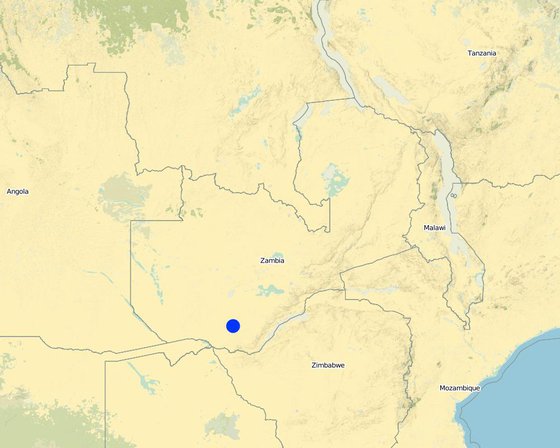
Location: Southern Province, Zambia
No. of Technology sites analysed:
Spread of the Technology: applied at specific points/ concentrated on a small area
In a permanently protected area?:
Date of implementation: 10-50 years ago
Type of introduction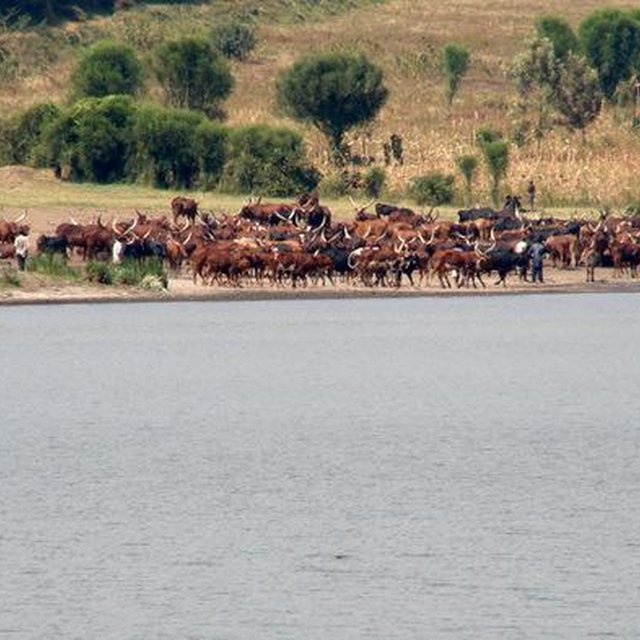
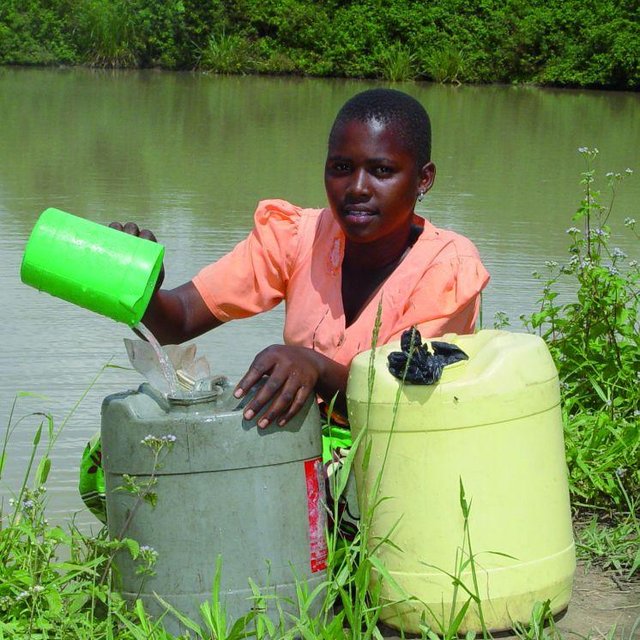




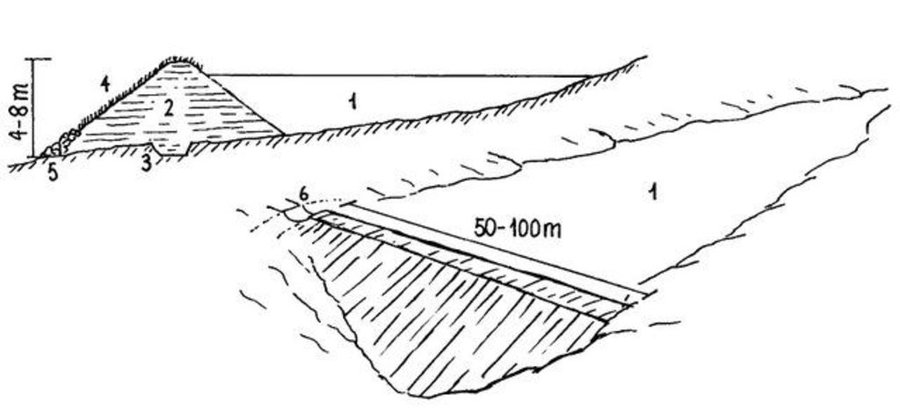
| Specify input | Unit | Quantity | Costs per Unit (n.a.) | Total costs per input (n.a.) | % of costs borne by land users |
| Labour | |||||
| Dam and spillway construction | unit | 1.0 | 2000.0 | 2000.0 | 20.0 |
| Equipment | |||||
| Tools | unit | 1.0 | 30000.0 | 30000.0 | 20.0 |
| Plant material | |||||
| Seeds | unit | 1.0 | 1000.0 | 1000.0 | 20.0 |
| Fertilizers and biocides | |||||
| Fertilizer | unit | 1.0 | 1000.0 | 1000.0 | 20.0 |
| Biocides | unit | 1.0 | 1000.0 | 1000.0 | 20.0 |
| Construction material | |||||
| Stone | unit | 1.0 | 15000.0 | 15000.0 | 20.0 |
| Total costs for establishment of the Technology | 50'000.0 | ||||
| Total costs for establishment of the Technology in USD | 50'000.0 | ||||
| Specify input | Unit | Quantity | Costs per Unit (n.a.) | Total costs per input (n.a.) | % of costs borne by land users |
| Labour | |||||
| Maintenance of dam | unit | 1.0 | 200.0 | 200.0 | |
| Equipment | |||||
| Tools | unit | 1.0 | 2000.0 | 2000.0 | |
| Plant material | |||||
| Seeds | unit | 1.0 | 300.0 | 300.0 | |
| Construction material | |||||
| Stone | unit | 1.0 | 1500.0 | 1500.0 | |
| Total costs for maintenance of the Technology | 4'000.0 | ||||
| Total costs for maintenance of the Technology in USD | 4'000.0 | ||||